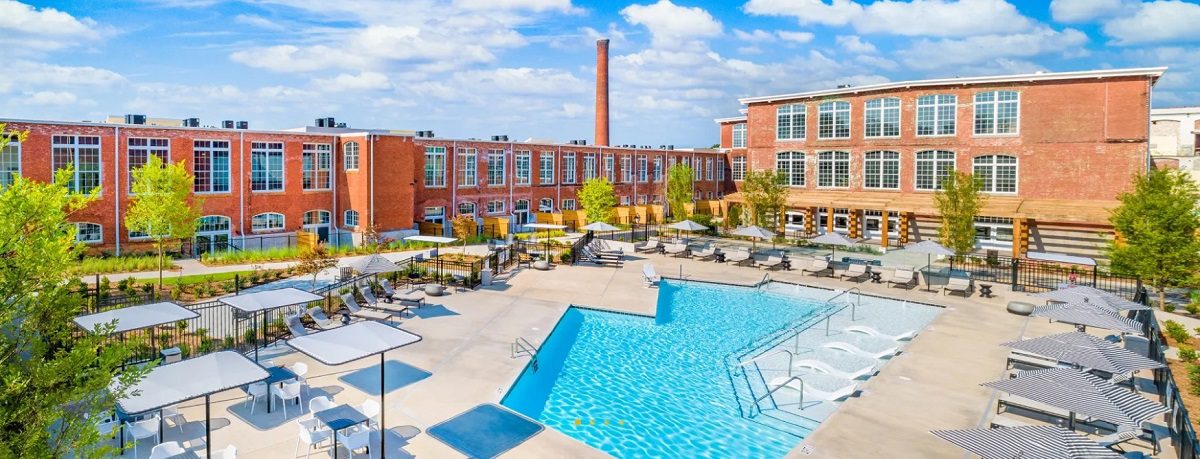A look at Judson Mill: How mill revitalization impacts surrounding communities

A collaborative space in Greenville’s Judson Mill District, the Jud Hub, opened recently and shines new light on both the positive impact of the mill repurpose project and potential downside. In a FOX Carolina report by Kennedi Harris, Judson Mill Development partner Matt Springer said over 40 percent of the residents in the mill neighborhood live in poverty. He sees Judson Mill as a way to bring people into the revitalized space with workforce housing units, a small grocer, meeting spaces for nonprofits and other organizations and soon retail and dining options.
Ken Kolb, chair and professor of the sociology department at Furman University, sees it another way. A lead investigator for the study, “Racial Displacement in Greenville, SC,” Kolb said the downturn in the textile market decades ago lowered property values and made way for Black families to move in. Now, with revitalization efforts, the property values are going up, putting Black families at risk of losing their homes.
“All these things [improvements] are great, but we also need to recognize that as we revitalize the mills, we’re going to make them attractive places to live, work and play,” Kolb said. “The most efficient way to increase new housing is to take advantage of the easiest opportunities, but we just have to be mindful of who it is we want to benefit from this type of revitalization,” he added.
Fun fact: Judson Mill, originally known as Westervelt Mill, got its name from Furman professor Charles Judson. Charles Judson was the second professor hired by Furman’s trustees when the school moved from Winnsboro to Greenville in 1851. His sister, Mary, helped him run the Greenville Woman’s College.